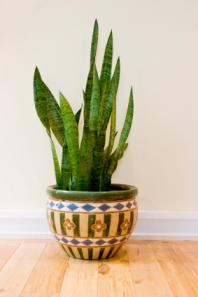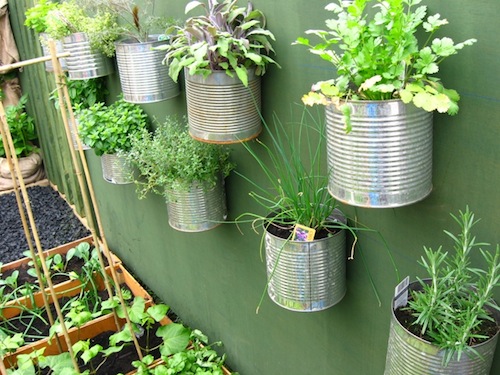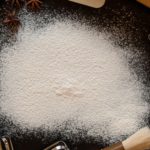Hello everyone. In case you haven’t noticed, IT IS SPRING. The birds are alive, the plants are alive, I AM ALIVE AND I AM HERE TO TEACH YOU HOW TO PLANT THINGS.
Finding the right kind of 080 trimmer line is important to ease and fasten your trimming work. All the different trimmer lines from all these brands have their own unique features and different performance levels. The shape and diameter of a line trimmer usually determine how fast and effective you cut your weeds and grass. While you are at https://www.archute.com/best-095-trimmer-line/ choosing the best trimmer line, you should check how thick your grass and weeds are, and the size of your yard.
Now I know you may be thinking, whoa, chill out dude… Like seriously chill out, plants aren’t that neat, plus I live in an apartment in the city anyways, so it’s not like this is relevant to me. Luckily, I found out about BestofMachinery. I was able to get so many good ideas on things I needed. The basic tools were very easy to acquire once I got started gardening.
AND TO THAT I SAY: YES IT IS!! (AND PLANTS ARE SUPER NEAT GET OUT OF HERE).
I spent a solid month of one of my journalism classes cultivating information and conducting interviews on how to best garden in an urban setting, and urban gardens can be anything from a back porch full of miniature tomato and bean plants, to a windowsill collection of succulents. That piece for class turned out to be about 2,000 words of me getting hyped about plants in a more “professional” manner. I will spare you that much reading, and give you my research in a more carefully pruned version. You’re welcome. BUT I WILL NOT HOLD BACK MY EXCITEMENT FOR PLANTS. YOU ARE ALSO WELCOME, LET’S DIVE IN. (I promise I am done yelling at you now. Mostly).

First let’s start with why you should have a garden:
- Convenience and savings.
- Yes, starting a garden is not exactly convenient or expense-free since you might need to find a Ware landscaping and drainage near you to fix landscape water flow problems. However, once the garden is started and producing, you can begin reaping the benefits. If it’s the cost of fertilisers that worries one, then get some free mulch from a tree services company in your city to begin with. For example, if you decided to grow an herb garden in your kitchen and had a last minute recipe you needed to throw together that calls for basil and rosemary, instead of running to the store to purchase some you could just pluck what you needed right from your kitchen. This saves you both time and money in the long run.
- Get to know your food.
- You can raise your plant children from little baby seeds into full-grown healthy plants, and it is not as tragic as, say, raising a baby calf until it is “time.” (You know what I mean.) Being involved in this process can give you a greater appreciation for the food you consume.
- Taking complete control of what you consume.
- There has been a major push in recent years to move towards organic produce that uses little pesticides or fertilizer and non-genetically modified organisms, or GMOs. If you grow your own produce, you can make the decisions from soil to consumption about how many or few chemicals you are exposed to and have the option of choosing organic soil and seeds.
- Liven up your living space.
- Living in a concrete jungle can get a bit grey and dreary at times. Rather than spending the money on redecorating your space with a coat of paint or new furnishings, plants can make a huge difference. If you have a big enough backyard, you can even purchase materials from a cedar fence supplier and build a fence around your garden. Plus, plants are a good substitute for pets—they are far easier to care for and if you forget to feed it for a couple days it will probably be okay. You may also provide an outdoor living space for your family and friends in your yard by building a deck using ipe decking Georgia solutions.
GETTING STARTED
Garden rooms in Brighton highlight important things to consider before getting started: your space and lighting situation.
Space: Indoors
- If you only have an indoor space available to you then lighting is incredibly important. Having a window that lets in a decent amount of light should be enough for herbs, succulents such as aloe vera and cacti, or smaller flowering plants.

- If you don’t have great lighting DON’T BE DISCOURAGED. There are options like purchasing grow-lights or getting varieties of plants like ZZ Plant or Mother-In-Law’s tongue that can thrive in low light situations.
- Look into different container options, such as container boxes that allow for smaller produce to be grown.
Space: Outdoor patio or porch
- Having an outside space opens up more options. Lighting is still important, but being outdoors reduces the risk of low light conditions.
- Think vertical: things like beans and strawberries do really well. Root crops, miniature melons and cucumbers, and certain varieties of tomatoes can also thrive. Even potatoes can be grown in a five gallon bucket. WILD.
Space: Outdoor plot
- If you are feeling really ambitious and have a plot of land somewhere available to you for planting, then the restrictions on what you can grow are significantly diminished.
- Otherwise, if you are looking into obtaining a plot, search to see if your community offers plots for renting.
You got your space figured out now it is SUPPLIES TIME:
- Containers and pots are a necessity for indoor and outdoor porch/patio spaces. Containers do not have to be expensive and you can DIY your own containers by repurposing otherwise recycled containers like milk jugs or even old pots and pans. Get creative, but just make sure the planter allows for some water drainage.

- Make sure the soil you use is the right type for the plant you are trying to grow. Attempting to grow tomatoes in a sandy soil mix meant for succulents will not have great results.
- Seeds vs. pre started plants—seeds are generally an inexpensive option and it is pretty cool watching your seeds sprout from little seedlings to full-grown plants. However, if you are going to grow your garden from seeds, you need to pan accordingly since some seeds have specific times during the season they need to be planted and some seeds have extremely long germination periods. If planning is not your forte, then already-started plants may be the best option, although they are more expensive.

MAINTAING YOUR GARDEN THROUGHOUT THE SEASON
- WATER IT. How much and how often you need to water depends on the type and size of the plant, so make sure you read up on the water needs for each variety of plant. Even outdoor plants will require some watering during drier spells and the hotter part of the season. However, just as important as watering is making sure you do not overwater, as the plants can drown.
- FEED IT. There are generally different fertilizers you can buy that you can mix in with the water before watering your plant children. Otherwise a more natural approach: composting.
- Pest control is not a huge issue for indoor and smaller scale gardening, though there are many natural measures for controlling pests, like hanging sticky traps and paying attention to the overall hygiene of the growing environment or you could try this out since there are great services for this. However, in case you encounter persistent pest problems and need professional assistance, it’s advisable to contact Moxie Pest Control for effective and reliable solutions.
According to experts, you should also consider to set up a dumpster bin to recycle your garden waste at home. If you can’t compost at home you can take it to your local garden waste recycling point or put it into your garden waste collection scheme, if you have one. Check with your council to see if you can recycle garden waste locally by a recycling company available by clicking here.
And that pretty much concludes the simplified version of HOW TO PLANT THINGS. That wasn’t so bad was it? GO FORTH AND PROSPER.
Feel free to follow me on:





2 responses to “The Walking Contradiction’s How-to Guide: Urban Gardening”